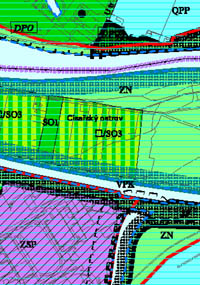
The Prague territorial plan is too complicated, as emerged from the discussion
 |
The zoning plan determines how individual areas can be used. According to Jiří Plos from the Czech Chamber of Architects, it sets the rules of the game, which makes sense. However, he believes the Prague zoning plan does not meet requirements. "It is often elaborated in the detail of a regulatory plan," said Plos. According to Jakub Sklenka from the development company Codeco, the plan is strict and inflexible.
Bürgermeister expressed even stronger criticism. He stated that the current zoning plan, which the city hall developed in the second half of the 1990s, has failed and is terrible. "It has slipped into a position between a regulatory plan and spatial planning documentation. The situation cannot satisfy anyone," he said.
According to him, there are around 400 requests for changes to the zoning plan each year. It is said to be complicated to distinguish which are significant and which are not. The upcoming change to the document should, according to the deputy, unify some types of land use, with their number expected to decrease by one third. According to the discussion participants, this will reduce from 77 to 51 types.
However, Plos believes that an even more radical change would be necessary. "It has to be incomparably simpler," he stated.
Participants in the discussion also pointed out that the processing of requests for changes to the zoning plan takes quite a long time. Reportedly, the time frame ranges from 1.5 years to two years.
City representatives reiterated to investors where in Prague there are currently large development areas. They mentioned railway lands in Žižkov, Smíchov, and Bubny, Masaryk Railway Station, as well as parcels from former industrial sites in Vysočany, Štěrboholy, Trojmezí, Horní Počernice, Bohdalec, and the area between Letňany, Kbely, and Štěrboholy.
The English translation is powered by AI tool. Switch to Czech to view the original text source.
0 comments
add comment






